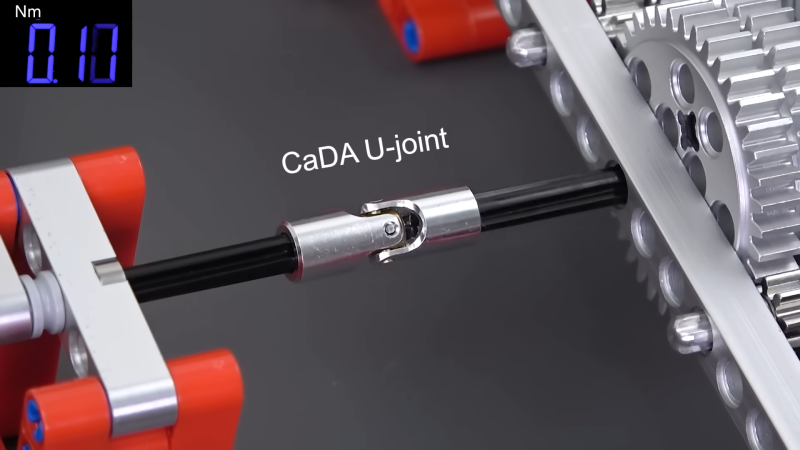Lego’s Technic line features all kinds of mechanical devices, from cogs to gears to chains and even pneumatic components. However, the vast majority of these components are made out of plastic and are only capable of toy-like levels of performance. In the competitive world of Lego YouTube, builders often push these parts to their limits, breaking them more often than you might think. To that end, [Brick Experiment Channel] has been investigating stouter Lego-compatible universal joints from a variety of third-party manufacturers.
The video starts with a simple demonstration, showing that a Lego universal joint pops apart at just 0.4 Nm of torque. It’s no surprise, given it relies on tiny plastic pins in snap-fit joints. However, this means that it’s not that hard to build a stronger universal joint to outperform the stock parts.
The video steps through a range of other options available on the market. For example, CaDA builds a universal joint using aluminium sleeves, a copper center, and steel pins to join everything together. It’s so strong that the plastic Lego axles fail long before the joint does. Tested with third-party aluminum axles, it eventually fails at 2.3 Nm of torque when the aluminum sleeve snaps. An all-steel joint from MTP goes even harder, eventually stripping out its axle mount at 4 Nm. The rest of the video goes on to explore angular performance, size, and other design features.
It’s fair to say that if you’re swapping out universal joints and axles for aluminum steel parts, you’re not really playing with Lego anymore. At the same time, it’s neat that there exists a sort of defacto standard kit for mechanical experimentation that is now being expanded upon with stronger components. Video after the break.















Remember: Universal joints are not constant-velocity: The speed of the output shaft varies during rotation. Use universal joints in pairs, set 90 degrees to each other, so the rate variation (mostly) cancels out: only the intermediate shaft between the two joints sees the velocity variation.
So, is there a proper CV joint in LEGO-land?
https://rebrickable.com/parts/32494/technic-steering-cv-joint/ + Related Parts.
Kinda, sorta looks like one, and says so on the tin, but it isn’t.
That has been my thought too, but I am not sure. But in use it at least feels more smooth, than the cardans.
Idk it looks like a two-peg version of what’s in my car…
Why not a constant velocity double-cardan joint?
https://en.wikipedia.org/wiki/Constant-velocity_joint#Double_Cardan
“There Are Better Lego-Compatible Universal Joints Out There”
Where? The 2 that are tested here are worse than the original in some ways.
I think they can be improved.
Don’t get your hopes up that Lego will ever improve them. They’ve been using the exact same design for them as they did 40 years ago, as far as I can tell.
I wonder if modern LEGO knockoffs have better parts like that.
The Chinese sometimes surprise you that way.
(I know, I’m not suppose to say this. Sorry.)
They length went from 4 to 3 somewhere between my Expert Builder years and my son’s Technic years.
They are not LEGO. I wasn’t talking about the LEGO part. I was talking about the 2 non-LEGO parts.